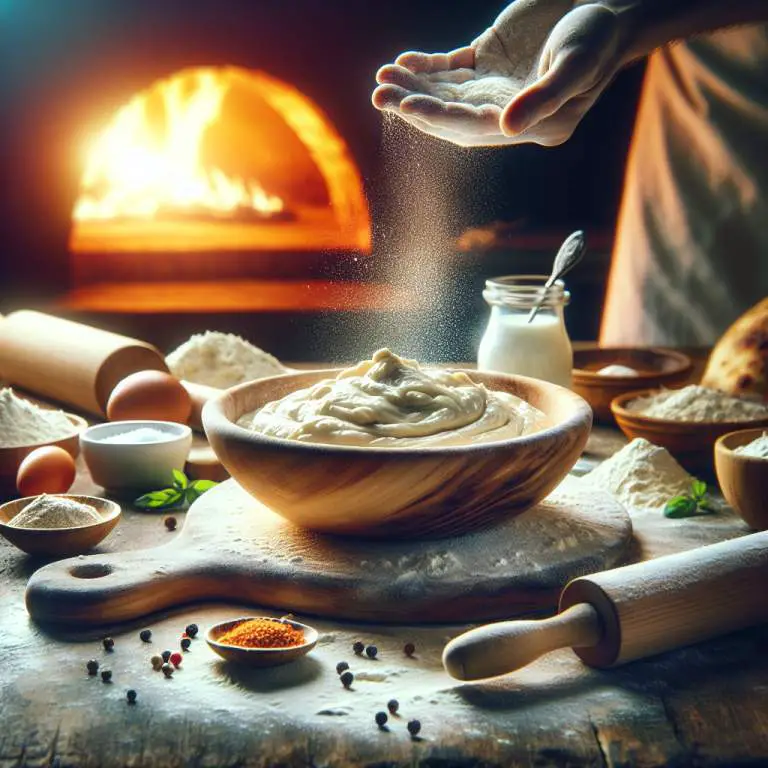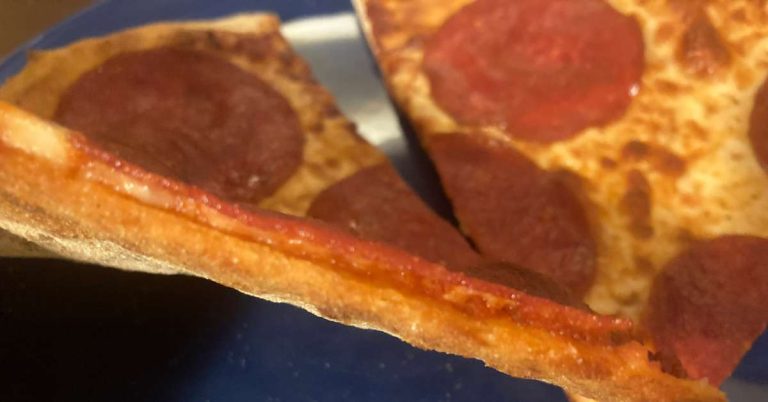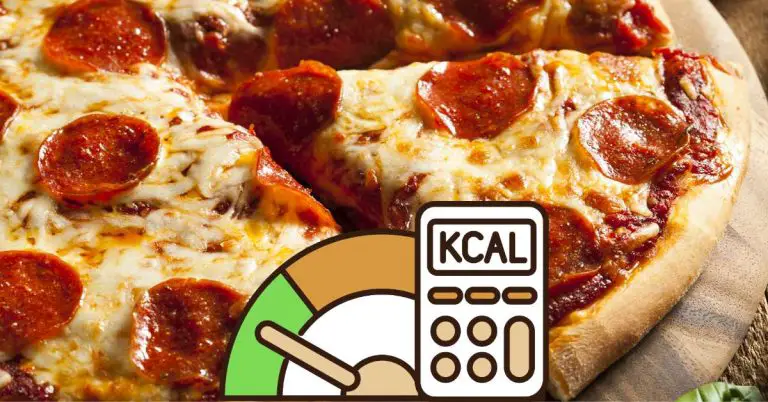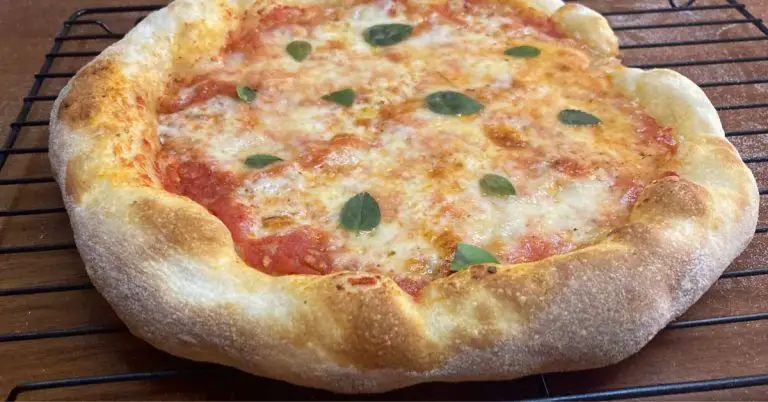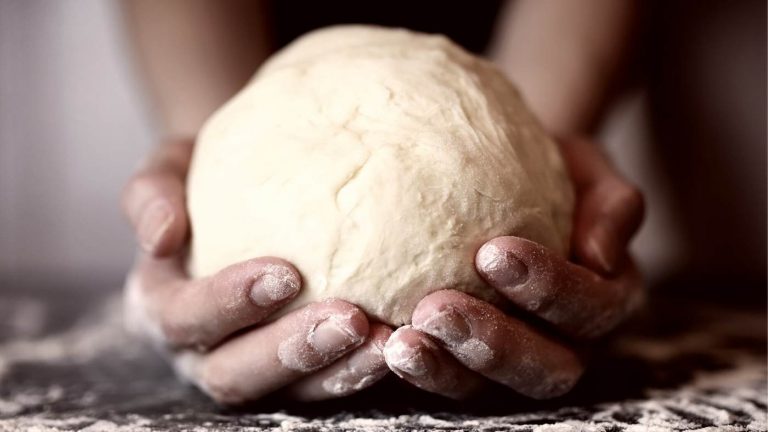Poolish vs Biga: Which is Better For Pizza Dough?
Poolish and biga are both a type of dough starter called a preferment? A preferment is used to kickstart the dough by giving it extra flavor and texture. This process helps the dough rise and provides a special taste that you can really notice when you take a bite.
What Is a Preferment?
A preferment is a mix of flour, water, and yeast that is allowed to ferment before it is added to the final dough. This early fermentation improves flavor, texture, and the overall strength of the dough. It gives the pizza a unique character that sets it apart from dough made without a preferment.
After understanding the basics, it’s important to note that the two types of preferments work differently. Poolish has high hydration and ferments quickly, while biga has low hydration and ferments for a longer time.
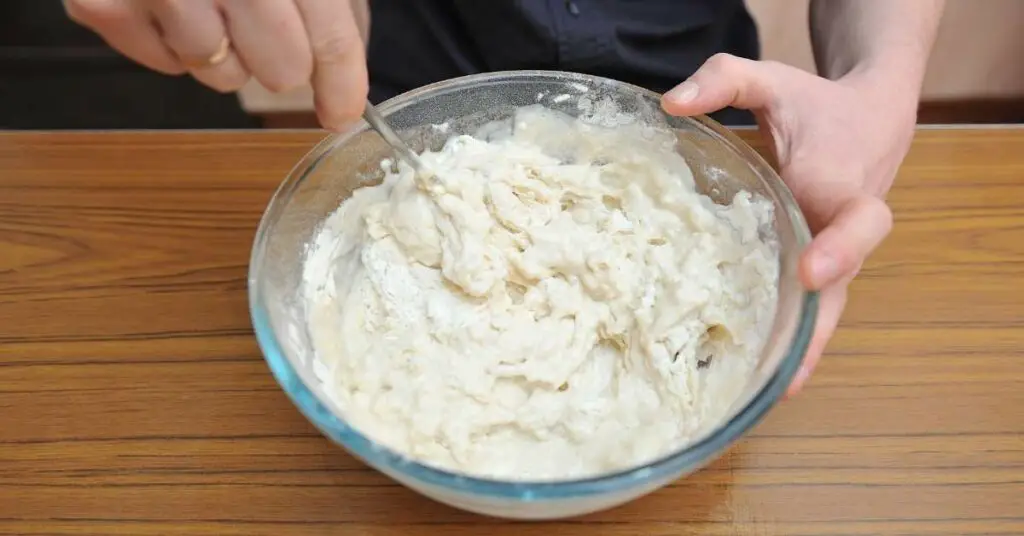
Why Use Preferments in Pizza Dough?
Using a preferment in pizza dough helps develop complex flavors and textures that are hard to achieve with a direct mix. When you use poolish, the dough develops a mild, slightly tangy flavor. On the other hand, biga contributes a sharper, tangier taste due to its lower water content and longer fermentation period. By understanding these differences, you can choose the method that produces the texture and flavor you want in your pizza.
The Science of Fermentation in Biga and Poolish
Have you ever wondered what happens in a ball of dough as it transforms into a delicious crust? Fermentation is the process where yeast and bacteria work on the dough and create bubbles. Poolish and biga are two methods of fermenting the dough, and they each produce different flavors due to the acids they form.
Acid Production in Fermentation
With biga, the dough is not very wet. In a drier environment, yeast and bacteria produce more acetic acid. Acetic acid gives the dough a tangier, almost vinegary taste. You might ask, “Why does less water change the flavor so much?” It’s because lower hydration favors bacteria that produce acetic acid, which builds a stronger and chewier dough.
The Role of Hydration in Fermentation
Poolish, however, uses a lot of water, which encourages the production of lactic acid. Lactic acid imparts a mild, yogurt-like flavor to the dough. You might wonder, “What does more water do?” The answer is that higher hydration leads to a softer dough and a more open crumb structure. These differences are crucial to understanding why each preferment affects the dough in its own way.
Understanding these scientific details can help you choose the right preferment for the taste and texture you want in your pizza dough.
Gluten Development with Biga and Poolish
Have you noticed that some pizza crusts are chewy while others are soft? The secret lies in gluten development. Gluten is a network of proteins that gives dough its structure and elasticity. How does gluten develop differently in biga and poolish? Let’s explore this topic further.
How Gluten Forms
In biga, the dough is drier, so gluten forms slowly. This slow development means that when the biga is mixed with the rest of the dough, it creates a strong gluten network. Many bakers ask, “Why is slow gluten development beneficial?” The answer is that it gives the dough a firm, chewy texture that holds up well during baking.
Impact on Dough Texture
Poolish, with its high water content, encourages rapid gluten formation. However, because the dough is wetter, the gluten network is looser, resulting in a softer dough with an open crumb. This softer texture is ideal for those who prefer a light, airy pizza crust. It is important to ask, “Which texture do I want for my pizza?” The choice of preferment directly affects the dough’s final consistency and texture.
A simple table compares the differences:
| Feature | Biga (Low Hydration) | Poolish (High Hydration) |
|---|---|---|
| Fermentation Time | Longer | Shorter |
| Gluten Formation | Slower, stronger network | Faster, softer network |
| Texture | Chewy, firm | Soft, open crumb |
By understanding how gluten develops, you can better control the texture of your pizza crust.
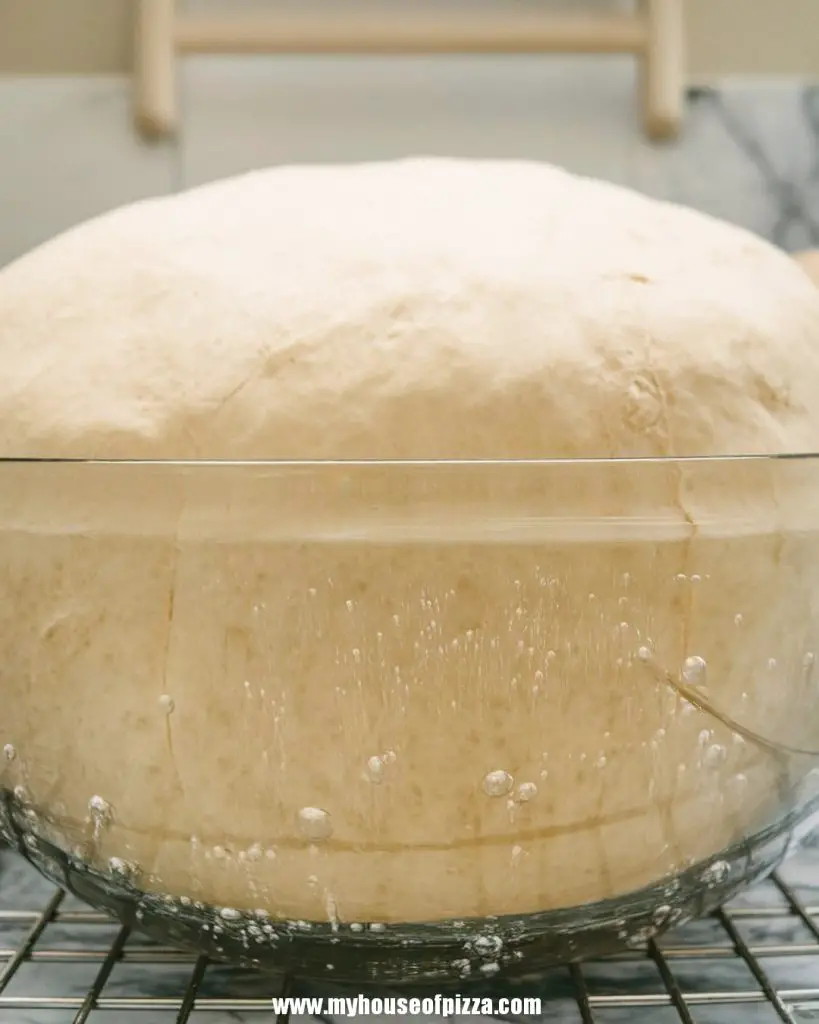
Dough Handling: Mixing, Kneading, and Shaping
Ever struggled with dough that doesn’t stretch and handle like you expected? The method you choose for fermentation affects how you mix, knead, and shape the dough. Both poolish and biga require different handling techniques, and knowing these can help you get a better result.
Mixing Techniques
When using biga, the dough is stiffer because it contains less water. It is important to cut the biga into small pieces before mixing it with the rest of the ingredients. This ensures that the dough mixes evenly without overworking the gluten network. Some wonder, “Should I use a mixer or my hands?” A stand mixer can be very effective, but careful hand kneading also works well.
Kneading and Shaping Tips
Poolish creates a stickier dough due to its higher hydration. To manage this, lightly dust your hands with flour to prevent the dough from sticking too much. The dough may feel softer and more relaxed, making it easier to shape and stretch. Many ask, “How do I handle a sticky dough?” The answer is to work gently and gradually build the gluten network. These techniques ensure that the dough maintains the right balance and texture throughout the process.
Following these tips can help you master the art of dough handling, making it easier to get that perfect pizza crust.
Hydration Tips for Perfect Pizza Dough
Do you know what hydration means in dough making? Hydration refers to the amount of water used in the dough, and it is crucial for achieving the perfect texture. Both poolish and biga affect the overall water content, so adjusting hydration is key to success.
Understanding Dough Hydration
Biga uses less water, which results in a stiffer dough. Many ask, “Why does less water create a stronger dough?” In a low-hydration environment, the fermentation produces more acetic acid, leading to a chewier texture. It is important to monitor the dough consistency as you mix the ingredients. If the dough feels too dry, you might need to add a little extra water.
Adjusting Water in Your Dough
Poolish contains a lot of water, making the dough stickier. When incorporating poolish into your final dough, you need to adjust the additional water accordingly. Ask yourself, “How much water is already in the poolish?” By accounting for the water in the preferment, you can avoid making the dough overly sticky. Careful measurement and adjustment are essential to achieve the desired consistency.
Basically, here’s how it works:
- Biga:
- Low hydration leads to a firmer dough
- Produces a chewier texture
- May require extra water in the final mix
- Poolish:
- High hydration creates a stickier dough
- Results in a softer, open crumb
- Adjust additional water to maintain balance
These hydration considerations are super important for ensuring your pizza dough turns out just right every time.
Practical Tips for Different Pizza Styles
Different pizza styles require different types of dough, and the choice between poolish and biga can influence the final product. Whether you prefer Neapolitan, New York, or Detroit style pizza, understanding how each preferment affects the dough is important.
Choosing the Right Preferment
For a modern Neapolitan pizza, lots of people prefer to use biga. The low hydration in biga gives the dough the strength needed to withstand high-temperature baking, resulting in a light, airy crust with a chewy edge. In contrast, traditional Neapolitan pizzas often use poolish to produce a milder flavor and a softer crumb.
Pizza Style Comparisons
New York style pizza can work well with either preferment. Poolish tends to give you a softer, stretchable dough, while biga produces a chewier texture. Detroit style pizza, which usually needs a high-hydration dough, really benefits from the use of poolish, because it results in a crispy crust with a soft interior.
Check out this table:
| Pizza Style | Preferred Preferment | Key Characteristics |
|---|---|---|
| Modern Neapolitan | Biga | Light, airy crust with chewy edge |
| Traditional Neapolitan | Poolish | Mild flavor, soft, open crumb |
| New York Style | Poolish or Biga | Soft, stretchable or chewy texture |
| Detroit Style | Poolish | High hydration, crispy edges |
By considering the style of pizza you want to make, you can select the preferment that best meets your needs.
Troubleshooting Common Dough Issues
Even experienced bakers face challenges when making dough. Sometimes the dough can be too sour, too weak, or uneven. Let us discuss common problems and simple fixes that can help improve your dough.
Identifying Dough Problems
One common issue is excessive acidity. If your dough tastes overly sour, it may be because the preferment fermented for too long or at too high a temperature. Many bakers ask, “How can I reduce the tangy flavor?” The answer is to shorten the fermentation time or lower the temperature during fermentation.
Simple Fixes for Common Issues
Weak dough that does not hold its shape might indicate that the preferment percentage is too low or that the dough was not kneaded enough. Increasing the amount of preferment or using a stronger flour can help build a better gluten network. On the other hand, dough that is too tough may be a result of over-kneading or insufficient water. Adjusting these factors can lead to a much-improved final product.
A quick bullet list of troubleshooting tips:
- Excessive Acidity:
- Shorten fermentation time
- Lower fermentation temperature
- Weak Dough:
- Increase preferment percentage
- Use higher-protein flour (like a strong bread flour)
- Knead a little more
- Tough Dough:
- Reduce kneading time
- Add a bit more water
- Uneven Texture:
- Ensure even mixing of the preferment
- Distribute ingredients thoroughly
By asking the right questions and making small adjustments, you can overcome many common dough problems and improve your pizza-making skills.
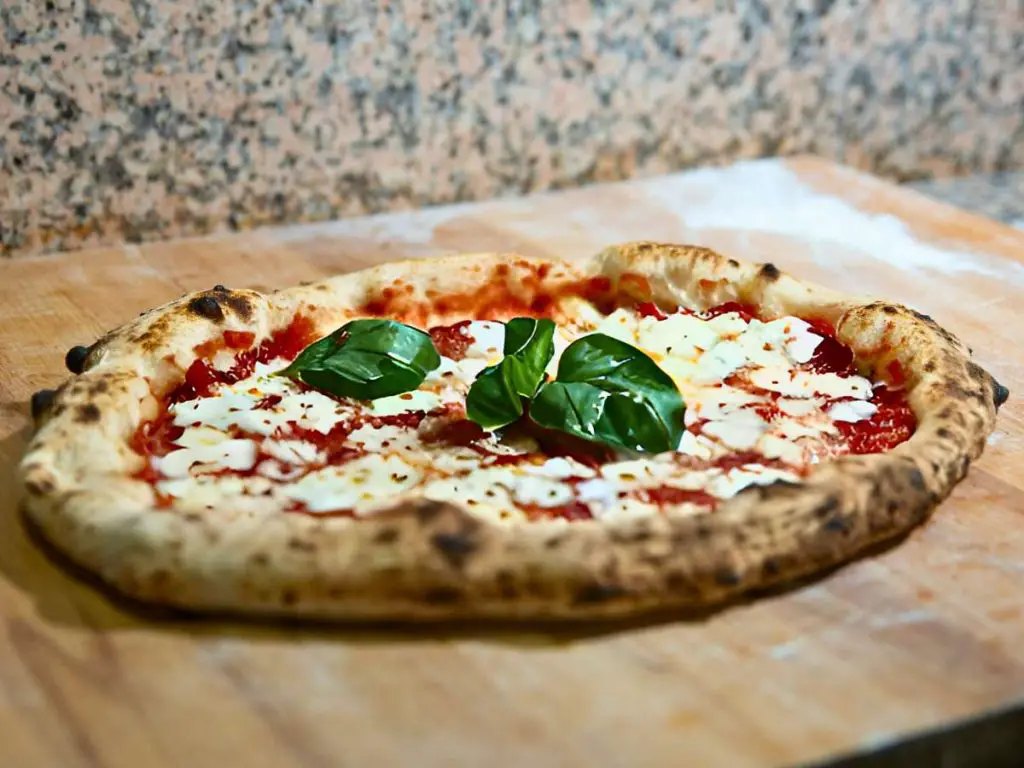
Expert Tips, Personal Anecdotes, and Final Thoughts
After years of making pizza, I’ve gathered some personal tips that may help you choose the best method for your dough. The choice between poolish and biga depends on your taste preference and the style of pizza you want to create. Let us share some expert advice and personal experiences.
Personal Experiences
I always keep track of my fermentation times. I ask myself, “How long did I let the preferment sit?” This helps me avoid a dough that is too acidic or too soft next time around. I once left my biga out way too long, and the dough turned out excessively tangy. Since then, I have made it a point to set a timer and follow the process closely. Keeping a record of each batch has helped me improve over time.
Final Advice and Summary
Another important tip is to adjust the water based on the preferment you use. I learned the hard way when I mistakenly used poolish in a recipe meant for biga—the dough became too sticky. Now, I always ask, “How much water is in my preferment?” and adjust the remaining water accordingly. There is no one-size-fits-all solution; each method offers unique benefits. Experimenting with small batches can be a great way to learn what works best for you.
In summary, whether you choose poolish or biga, remember that each technique contributes its own special qualities to the dough. Ask questions at each step, learn from mistakes, and keep refining your process. Every pizza you make is an opportunity to become a better baker.
Frequently Asked Questions (FAQ)
What is the main difference between poolish and biga?
Poolish uses more water and ferments faster, resulting in a milder, softer dough. Biga uses less water, ferments longer, and produces a tangier, chewier texture.
How does fermentation affect pizza dough flavor?
Fermentation produces acids—acetic acid in biga gives a tangy flavor, while lactic acid in poolish creates a milder, yogurt-like taste.
Which preferment is best for a chewy pizza crust?
Biga is used for a chewier, stronger crust, while poolish yields a softer, more open crumb.
How do I adjust hydration when using a preferment?
Count the water already in your preferment and add only what is needed to achieve the desired dough consistency.
What can I do if my dough turns out too sour or too weak?
To reduce sourness, shorten the fermentation time or lower the temperature; to strengthen the dough, increase the preferment percentage or knead more thoroughly.
Feel free to ask any additional questions you might have below, and keep experimenting—each pizza is a step toward becoming a better pizza maker!


